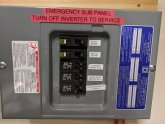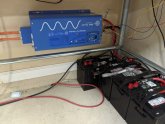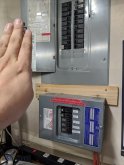I am in the process of building a home backup battery bank myself (as a total rookie). Just curious, why would you charge your battery pack with a generator? AFAIK that's the most expensive and least efficient way to do it. Why not just charge from the grid? That's the same thing a Tesla Powerwall does and even at CA PG&E rates, the cost of the grid power should be much cheaper than the cost of gasoline for the same power. Then you wouldn't have worries about noise, exhaust, heat, etc.
Will has a Youtube video on comparing the Goal Zero and Inergy with lithium, lead-acid and others which might be helpful with respect to cost comparisons.
Either way, as a newbie I think how your bank is charged comes down to the inverter/charger and sizing it correctly with the right inputs and outputs. I'm sure one of the experts here in the forum could provide pointers to recommended components.
On second thought, I guess having the ability to charge three ways (solar, grid, generator) would be pretty handy. Maybe some sort of automatic transfer switch? Will has a video about that, too:






